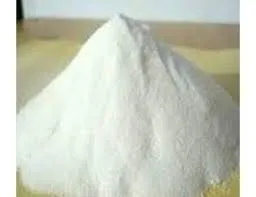
Dec . 17, 2024 16:58 Back to list
hpmc for construction
HPMC for Construction Enhancing Performance and Durability
Hydroxypropyl Methylcellulose (HPMC) is a versatile and widely used cellulose ether in the construction industry. Known for its superb properties, HPMC plays a pivotal role in enhancing the performance and durability of various construction materials, particularly in cement-based formulations such as mortars, plasters, and tile adhesives. Its unique characteristics make it an invaluable additive, contributing to the overall quality of construction projects.
HPMC for Construction Enhancing Performance and Durability
HPMC also contributes to the water retention of construction materials, a crucial factor in ensuring optimal curing of cement. Proper curing is essential for achieving the desired strength and durability of concrete. The addition of HPMC helps to retain moisture within the mixture, reducing the risk of premature drying and cracking. This is especially beneficial in hot or windy conditions, where evaporation can occur rapidly. By creating a controlled environment for hydration, HPMC supports the structural integrity of the finished product.
hpmc for construction

Furthermore, HPMC enhances the adhesion properties of tile adhesives, plasters, and renders. Its film-forming ability allows for better bonding between the materials and the substrate, which is critical in applications such as tiling, where strong adhesion is necessary to prevent failures. The use of HPMC in tile adhesives helps to create a robust bond capable of withstanding various stresses, including thermal expansion and contraction, which can occur due to environmental changes.
Another significant benefit of using HPMC in construction is its impact on the flexibility and elasticity of the final product. Cement-based materials that incorporate HPMC exhibit improved flexibility, making them less prone to cracking under stress. This is particularly important in areas prone to movement, such as seismic zones, where the material must withstand dynamic forces without compromising its structural integrity.
Environmental considerations also drive the adoption of HPMC in construction. As construction industry practices move towards sustainability, the demand for eco-friendly materials increases. HPMC is derived from natural cellulose, making it a more sustainable option compared to synthetic additives. Additionally, its effectiveness often allows for lower dosages in formulations, further reducing the overall environmental footprint of construction projects.
In conclusion, HPMC is a critical component in modern construction practices, providing numerous benefits that improve the quality, durability, and performance of cement-based materials. Its ability to enhance workability, water retention, adhesion, and flexibility makes it an essential additive in a range of applications, from tile adhesives to plasters. As the construction industry continues to evolve and emphasize sustainable practices, HPMC will undoubtedly play an increasingly important role in shaping the future of construction materials. By leveraging the advantages that HPMC offers, builders and architects can ensure that their projects are not only aesthetically pleasing but also structurally sound and durable, meeting the demands of a changing environment.
-
Versatile Hpmc Uses in Different Industries
NewsJun.19,2025
-
Redispersible Powder's Role in Enhancing Durability of Construction Products
NewsJun.19,2025
-
Hydroxyethyl Cellulose Applications Driving Green Industrial Processes
NewsJun.19,2025
-
Exploring Different Redispersible Polymer Powder
NewsJun.19,2025
-
Choosing the Right Mortar Bonding Agent
NewsJun.19,2025
-
Applications and Significance of China Hpmc in Modern Industries
NewsJun.19,2025







